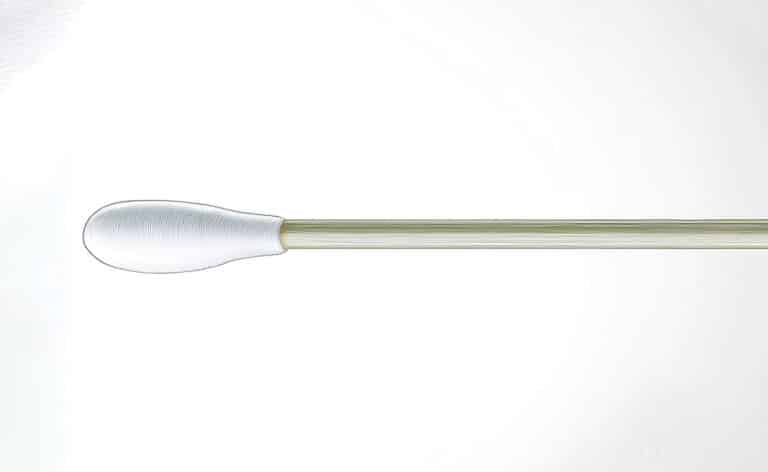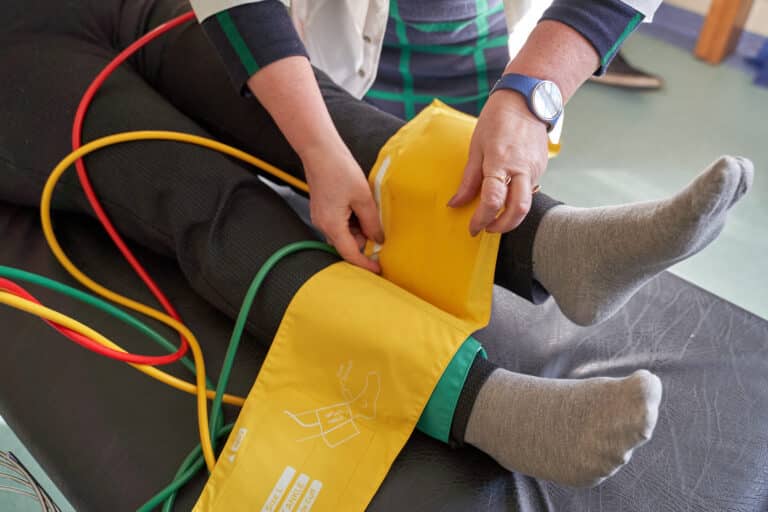Less cutting of tendons and ligaments can lead to quicker recovery
Michael Floodstrand had always led an active lifestyle. He played hockey and baseball as a kid, and he continued to work out regularly and play golf as an adult. By the time he reached his 50s, however, his hips were beginning to complain. After having his left hip replaced several years ago, he opted for minimally invasive surgery with Justin LaReau, MD, an orthopedic surgeon at Hinsdale Orthopaedics, to replace his right hip.
“I was having varying degrees of pain, and [my hip] wasn’t functioning the way it should,” says the Burr Ridge resident. He recently had the surgery performed during the late afternoon and was home the next day. Eight days later, he was driving again.
“I’m only four weeks out, and I can already tell the difference,” says Floodstrand, 55. “People tell me I look like I’m standing up straighter. There’s no pain or discomfort, and I can feel that my hip is working correctly.”
More patients are opting for minimally invasive surgery rather than the traditional approach for common orthopedic procedures including spine surgery and knee and hip replacements.
Less trauma damage, less pain
With a traditional hip replacement, the surgeon makes an incision of 8 to 12 inches, detaches the muscles from the hip and replaces the damaged part of the hip with a metal ball and socket that function as a new joint. Minimally invasive surgery, on the other hand, doesn’t require any muscular detachment. Patients have a single 3- to 4-inch incision.
“It’s surgery where you don’t cut muscles, ligaments and tendons. You still do the same things as traditional surgery, but without injuring the soft tissues,” says Richard Berger, MD, an orthopedic surgeon at Rush University Medical Center.
Another option, called smaller incision surgery, involves smaller incisions but significant muscle detachment, so it’s not considered minimally invasive.
With minimally invasive surgery, Berger says, recovery is faster, since the muscles and ligaments are not cut. Typically, his patients climb a flight of stairs and walk out of the hospital the same day or the next day after having a knee or hip replaced.
Minimally invasive surgery started to gain popularity in the early 2000s. Earlier surgical techniques typically required detaching a significant amount of muscle because of the nature of the surgical tools at the time. As doctors have developed specialized surgical instruments they’ve been able to perform surgeries with smaller incisions and less trauma to the surrounding muscles.

“Over the last 10 years, there have been a series of continued refinements to the surgical instruments [that let doctors] work at tight angles and tight spaces that were not previously available,” LaReau explains.
While a smaller incision may look better, it’s not incision size but the amount of damage to soft tissue that typically determines your recovery time. The more swelling and bleeding you have, the more pain you’re likely to experience—and the longer your recovery may take.
Minimally invasive surgery is technically more difficult to perform than the traditional approach. It also takes longer, which is why many doctors stick with traditional approaches, Berger says.
Who’s a candidate for minimally invasive surgery?
“I try to use minimally invasive techniques on as many patients as possible,” LaReau says. Not everyone is a candidate, though. In general, minimally invasive surgery is an option for people who are in good general health and at a healthy body weight. Patients who are significantly overweight, who have had multiple surgeries or major scarring, or who require more complex procedures may have to opt for traditional surgery.
Usually patients who choose minimally invasive surgery will go home that day or the next, instead of enduring a several-day hospital stay. Recovery is typically shorter and less painful, and patients are able to return to normal activities more quickly.
The typical patient is a busy, active person who can’t afford—or doesn’t want—to take months off from work and family activities to recover from surgery. With minimally invasive surgery, patients can be back at work in a week or so, Berger says.
Insurance companies don’t distinguish between the two types of surgery in terms of coverage. Just be sure to find a surgeon who specializes in these types of procedures. “Ask how long your surgeon has been performing minimally invasive surgery,” Berger says. “They need a year or two of experience to get good at it.”
The bottom line is that any surgery—including one that is minimally invasive—has risks. Carefully weigh the benefits and drawbacks of any procedure. Talk to your doctor about what to expect during and after surgery and about what you can do to enhance your recovery. Floodstrand is glad he opted for a minimally invasive approach the second time around.
“People tend to wait [too long] before surgery, but to me, what’s the point of being in pain and discomfort?” Floodstrand says. “If the doctor thinks you’re ready for it, minimally invasive surgery has an enormous success rate. It’s been a slam dunk for me, and my hip is working great!”











